Aliens: where are the most likely places for life in our solar system?
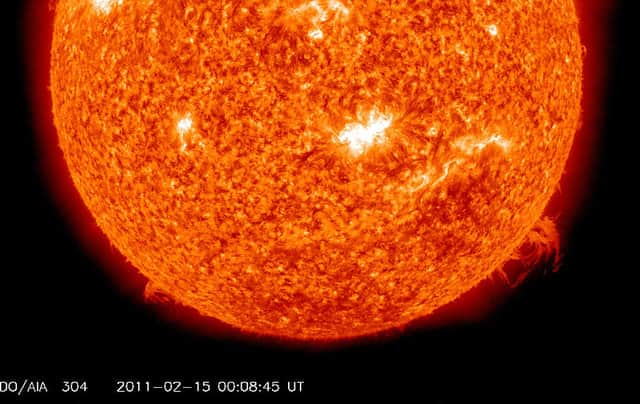

The question of extraterrestrial life always fascinates us as it answers the question: are we alone in the universe? With Earth being unique in its composition, and its ability to sustain water-based lifeforms, we look outwards to see if any other planet could sustain life, and if so, how.
Our solar system has 290 moons and eight planets and so far, we only know Earth to hold life. Many moons in the depth of the solar system have liquid water and so, what moons and planets in our solar system can support life? Here is what you need to know.
Advertisement
Hide AdAdvertisement
Hide AdIs there life on Mercury?
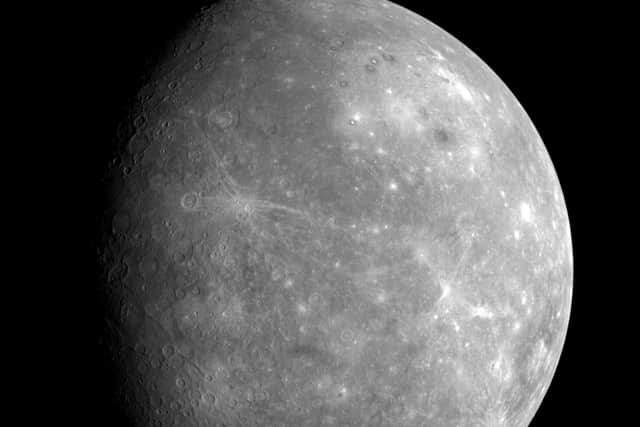

Mercury is the smallest planet in our solar system, being only slightly larger than Earth's moon, and nearest to the Sun, but it is not the hottest. Due to its composition, temperatures and solar radiation, it cannot support life. This planet also has no moons.
Could life exist on Venus?
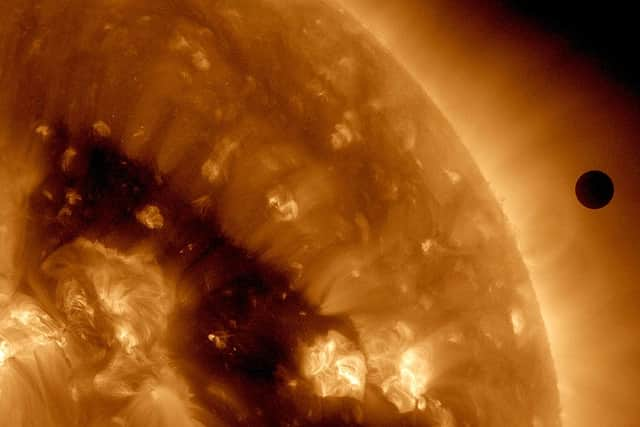

Venus is the hottest planet in the solar system due to its thick atmosphere that traps heat in a runaway greenhouse effect. It is a hostile place, being very dry with no evidence of water, its surface temperature is hot enough to melt lead, and its atmosphere is so thick that the air pressure on its surface is over 90 times that on Earth - so it cannot support life. The planet has no moons.
However, life on Venus has been a subject of interest as its proximity and similarity to Earth, so astronomers speculate that life may have been present before the greenhouse effect. However, no evidence of life has been found but a few scientists have speculated that thermoacidophilic extremophile micro-organisms might exist in the temperate, acidic upper layers of the Venusian atmosphere.
Venus, whose surface is covered in clouds, prompted mass speculation that there could be life on Venus. In 1870, the British astronomer Richard A. Proctor said the existence of life on Venus was impossible near its equator, but possible near its poles.
Advertisement
Hide AdAdvertisement
Hide AdHowever, in February 2021, an updated status of studies considering the possible detection of lifeforms on Venus via phosphine, a gas associated with living organisms and more studies will be looking into this.
Is there life on Mars?
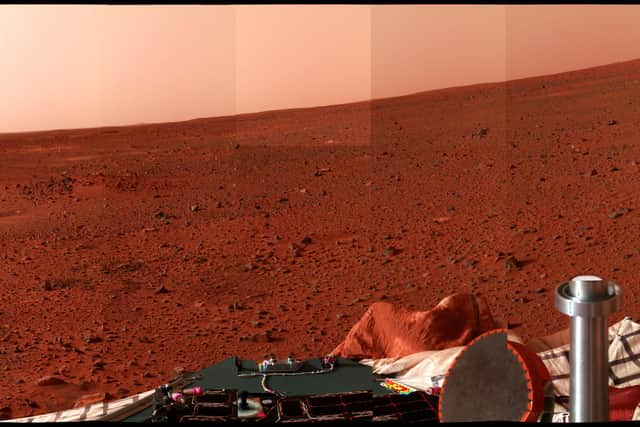

The question of life on Mars has interested astronomers for centuries. But to date, there has been no proof of past or present life on Mars. However, cumulative evidence suggests during the ancient Noachian time period, the surface environment of Mars had liquid water and may have been habitable for micro-organisms.
Studies happen via telescopic investigations and deployed probes, searching for water, chemical biosignatures in the soil and rocks at the planet's surface, and biomarker gases in the atmosphere.
Mars is of particular interest for the study of the origins of life because of its similarity to the early Earth, as it has remained unchanged since the Hesperian period.
Advertisement
Hide AdAdvertisement
Hide AdThe Mars rovers have confirmed the existence of past surface liquid water, and findings of organic compounds inside sedimentary rocks and of boron on Mars are of interest as they are precursors for prebiotic chemistry. In June 2018, Nasa announced the detection of seasonal variation of methane levels on Mars - which could be produced by micro-organisms or by geological means.
Mars has two moons, Phobos and Deimos, but these are barren and cannot support life.
Is there life on Jupiter?


Jupiter is a gas giant, and does not have a solid surface - therefore no water-based life forms could exist on the planet. However, its moons are of interest.
Jupiter has 95 moons that form a satellite system called the Jovian system. The biggest of all the moons are the four Galilean moons: Io, Europa, Ganymede, and Callisto, which were independently discovered in 1610 by Galileo Galilei and Simon Marius. For life, however, icy Europa is the most intriguing, as researchers suspect that underneath its frozen crust, Europa hosts a saltwater ocean churning over its rocky mantle.
Advertisement
Hide AdAdvertisement
Hide AdNasa says life as we know it seems to have three main requirements: liquid water, certain chemical elements, and an energy source, and Europa seems to have all three.
The American space agency says Europa’s ocean may have existed for the entirety of our solar system’s history, as well as the right chemical elements – the building blocks of life – including carbon, hydrogen, nitrogen, oxygen, phosphorus, and sulfur. In terms of energy, any type of life on Europa likely would be powered purely by chemical reactions instead of by photosynthesis, because any life at Europa would exist beneath the ice, where there is no sunlight.
Is there life on Saturn?
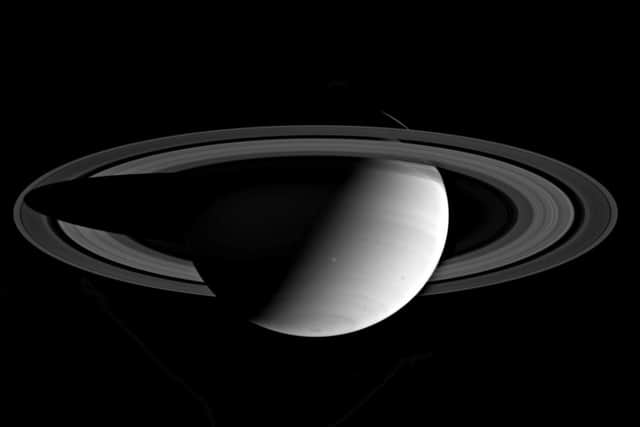

Saturn is comprised of almost entirely hydrogen and helium and therefore is not conducive to support life. But once again, we turn to some of its 146 moons.
Saturn's main moon, Titan, which is its biggest, is the second-largest in the solar system and is a place where life can be sustained as it is the only place, other than Earth, that has liquids in the form of rivers, lakes, and seas on its surface - and there are small and large bodies of both liquid methane and ethane, and it is likely that there is a layer of liquid water under its ice shell.
Advertisement
Hide AdAdvertisement
Hide AdAnother one of its moons, Enceladus, also has the potential for life. Using data collected by Nasa's Cassini mission, an international team of scientists discovered phosphorus – an essential chemical element for life – locked inside salt-rich ice grains ejected into space from Enceladus. This moon also creates plumes via its subsurface ocean, that emerge from its icy shell. Scientists found that Enceladus’ ice grains contain a rich array of minerals and organic compounds – including the ingredients for amino acids – associated with life as we know it.
Is there life on Uranus?
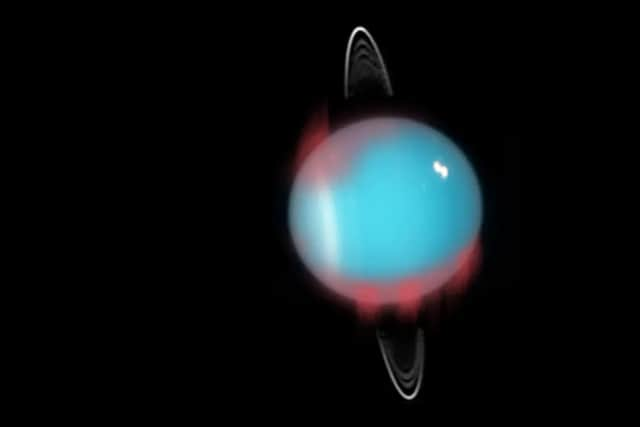

The short answer is no. Uranus is highly pressured and would crush life - and it has no energy to sustain life.
Once again, we turn to its moons. Uranus has 27 known moons, including five major moons: Miranda, Ariel, Umbriel, Titania, and Oberon, with four, excluding Miranda, likely containing an ocean between their cores and icy crusts. However, Titania and Oberon have oceans that may even be warm enough to potentially support extraterrestrial life as moons' rocky mantles release hot liquid and would help an ocean maintain a warm environment.
Titania, which is bigger, would be most likely to retain internal heat because of the warmth created by radioactive decay. This discovery was made by re-analysing data from Voyager 2's close flybys of Uranus in the 1980s.
Advertisement
Hide AdAdvertisement
Hide AdIs there life on Neptune?
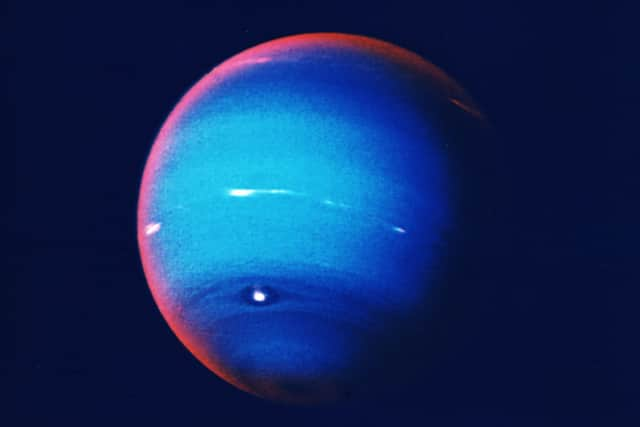

Neptune does not have a solid surface. Its atmosphere (made up mostly of hydrogen, helium, and methane) extends to great depths, gradually merging into water and other melted ices over a heavier, solid core with about the same mass as Earth.
Neptune has 14 moons, and its largest is Triton, and the only one with a retrograde orbit - an orbit in the direction opposite to its planet's rotation. It has long been speculated that Triton would hold life, even though it is at the far end of the solar system. It’s one of only five moons in the solar system known to be geologically active, with active geysers that spew sublimated nitrogen gas. Its surface is mostly frozen nitrogen, its crust is made of water ice, and it has an icy mantle.
The moon also has energy. Heat is generated by tidal forces - the gravitational friction between Triton and Neptune, and that could help warm up the waters and give rise to life through any organics that might exist on the moon.
Comment Guidelines
National World encourages reader discussion on our stories. User feedback, insights and back-and-forth exchanges add a rich layer of context to reporting. Please review our Community Guidelines before commenting.
